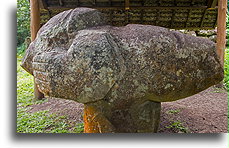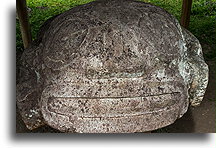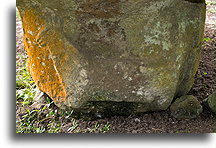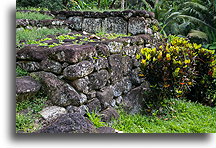A winding road through the mountains, led us to the northern coast of Hiva Oa Island. Nobody lives in the island's interior. It is too far from the sea, the natural source of food for the natives. Small and sleepy villages we pass are only at the shore. In the Marquesas, people have always lived in the valleys with close proximity to the ocean. Even today, name of the valley is used to determine the location. The inhabitants of the Marquesas were people of the sea and fought with other clans, attacking them using outrigger canoes, never by foot. From the sea, it was the best way to reach other valleys. Gnawed by the ocean and carved by rain, cliffs dividing the neighboring valleys are like huge wrinkled legs of a lying giant. They are often too steep to cross them on foot.

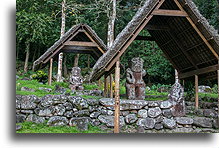
At the end of the road, at the foot of Toea peak, located is the archeological site Iipona. It consists of two main terraces and flat areas. It is famous for the second biggest stone statues in the whole Polynesia, after moai on Rapa Nui (Easter Island). No doubt, tiki statues standing here are impressive. We generally assume that all the tiki represent men. This is wrong assumption. Some archeologists estimate that only 20% of tiki statues depict male, 7% are females and the vast majority of them are genderless.

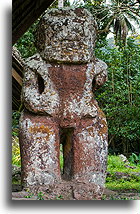
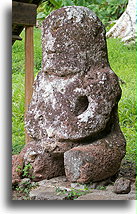
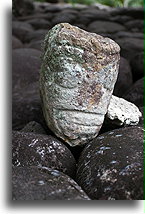
Great Chief and warrior Takaii has the biggest statue of 2.4 m high, which was erected by his people to commemorate the chief's strength. Fau Poe is female tiki in a seating position. She is Takaii's wife. Another tiki, Manuiotaa has deliberately shifted head. Very uncommon is tiki named Maki'i Tau'a Pepe. This female representation in a horizontal position interpreted is as giving birth. The base of Pepe tiki contains bas-relief images. The most surprising is the one representing an animal that does not resemble any native of these islands and even the whole Polynesia. Over the last century, many theories have arisen around this carving. There were theories that bas-relief image is of llama from Peru, suggesting that it would have been Polynesian contact with South America. Other theory suggests that the image depicts an extinct Marquesan dog that lived here before the arrival of the first Europeans. Dog bones discovered on several islands are expected to confirm this.
